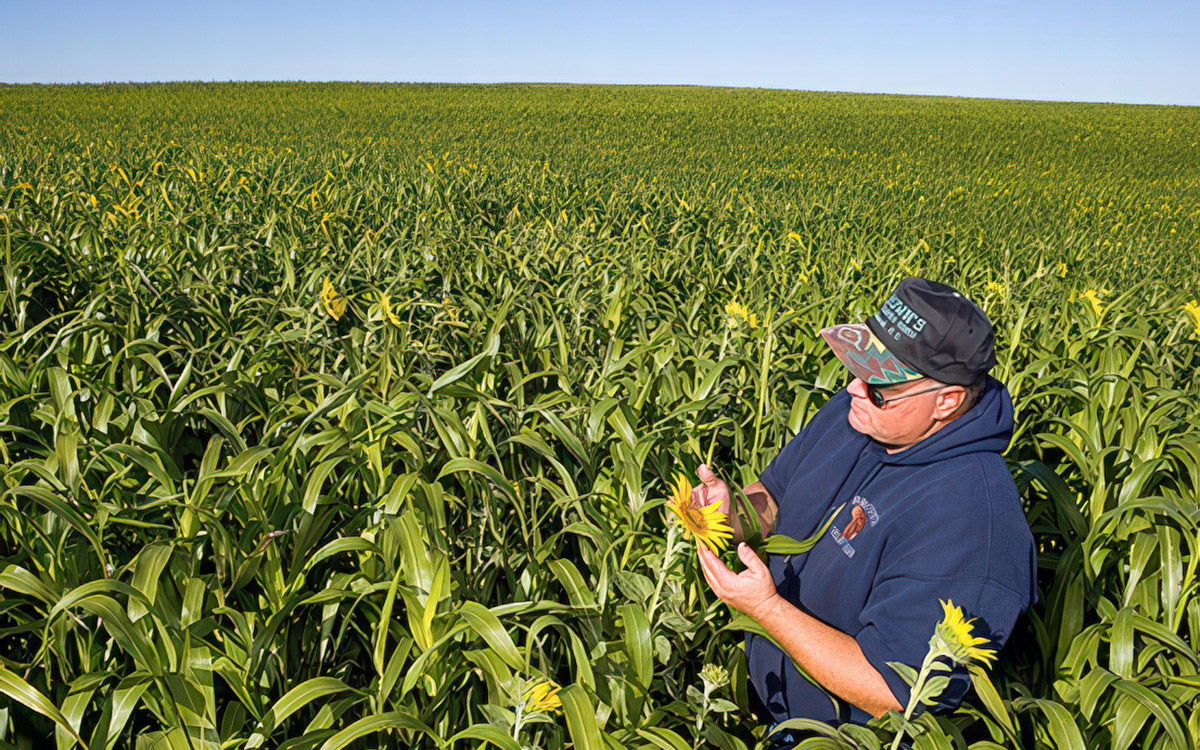As ranch managers practicing holistic methods, we’ve witnessed a significant shift in how our ranching communities approach land stewardship.
Where Restoration Meets Management, Article 1

05/22/2025
This is the second of a three part series about restoring land through regenerative land management.
By: Mark Biaggi, Hayley Strohm, and Kevin Watt (Bookcliff Consulting)
Article 1: Restoration Success Stories through Regenerative Land Management
Read Article 2. Read Article 3
As ranch managers practicing holistic methods, we’ve witnessed a significant shift in how our ranching communities approach land stewardship. The regenerative practices that some have long advocated for are finally gaining widespread recognition. These approaches confirm what many experienced land managers have understood: working with natural systems yields far better results than working against them. Where regenerative practices have been applied, land grows more resilient to the effects of flood, drought, fire, and freeze.
Some of the most inspiring examples we know about are due to the scale of transformation occurring. A few examples are described briefly below. We encourage readers to follow the links we have provided to learn more about these incredible and inspiring examples.
The Loess Plateau Transformation

The Loess Plateau restoration project in China represents one of the most comprehensive land rehabilitation efforts we have learned about. Beginning in the 1990s, leaders of this initiative set out to restore lands severely degraded by centuries of overgrazing and unsustainable farming practices and turn them back into thriving healthy lands.
Through strategic terracing, native vegetation restoration, and regenerative agricultural methods, four million hectares of once-degraded lands were restored to lush and productive hillsides. Soil erosion rates decreased dramatically while water retention improved, reducing flood risks. Grain production increased by 300% and farmer incomes doubled. This incredible success story is worth diving into.
Australia’s Practical Innovations

Photo source: https://winona.net.au/pasture-cropping/
Australian ranchers and farmers have developed inspiring ways to address challenges in their region. Colin Seis’s “pasture cropping” technique, for example, integrates annual crops with perennial pastures. Colin sells the annual crops and graze sheep on the perennial pastures. Using regenerative planned grazing, the sheep cycle the biomass left over from the annual grain harvest through their dung. This increases the biodiversity above and below ground and improves fertility. Colin’s regenerative management helps make the land healthier while growing grain and sheep for protein and wool.
The farms employing these practices benefit from successful crops and increased resilience during extreme weather events due to their increased soil health; the soil acts like a sponge during intense moisture events, and the cover crops serve to keep the soil and plants cool to retain moisture during dry times. These farms stand as inspiring examples of how regenerative practices can deliver tangible risk management benefits alongside ecological improvements.
Gabe Brown’s Systematic Approach

North Dakota farmer Gabe Brown is considered a pioneer in the soil health movement and has been recognized for his agricultural leadership. Gabe and his family have restored degraded farmland into resilient, productive ecosystems. His 5,000-acre operation implements five core principles: minimal soil disturbance, continuous soil coverage, plant diversity, year-round living roots, and livestock integration.
Gabe’s farm has seen a 20% increase in soil organic matter and significantly improved water infiltration rates. His operation maintains profitability without reliance on subsidies, demonstrating the economic viability of regenerative agriculture at scale. Brown’s willingness to document and share his methodology has accelerated adoption across North America. For more information, learn more here.
Indigenous Knowledge and Contemporary Application

Photo source: https://www.nature.org/en-us/about-us/who-we-are/how-we-work/community-led-conservation/american-buffalo/ © Morgan Heim
Throughout the world, traditional ecological knowledge is informing land restoration projects. Time-tested approaches, developed over thousands of years of observation and adaptation by humans who viewed themselves as integral to the ecosystems they inhabited, are key to regenerative processes. Indigenous practices that emphasize relationships between species, seasonal timing of interactions, and deep cultural connection to place are elements far too often missing within the conventional management paradigms.
In Brazil, indigenous-led agroforestry initiatives are restoring both deforested areas and productive food crops. In North America, the reintroduction of bison to tribal lands is restoring prairie ecosystems and demonstrating the critical role of appropriate grazing management in grassland health. The Menominee Tribe’s forestry practices have created one of the most diverse and productive forests in the northern Great Lakes region. Meanwhile, cultural burning practices from Indigenous communities in Australia, California, and elsewhere are being incorporated into fire management, recognizing that frequent, low-intensity burns can prevent catastrophic wildfires while promoting biodiversity and ecosystem health.
Future Directions
The success of these regenerative examples and many more is attracting attention from both public and private sectors. Major food companies are beginning to try structuring supply chains to support regenerative practices, and policy frameworks are recognizing regenerative approaches as essential economic resilience strategies.
As ranch managers, we have witnessed the degradation caused by conventional land management practices and the recovery possible through regenerative methods. We are encouraged by both the growing evidence supporting regenerative land management approaches and by the many examples demonstrating how humans are improving ecosystems in ways that provide not only clean air, water, and biodiversity but also food, fiber, and shelter in regenerative ways.